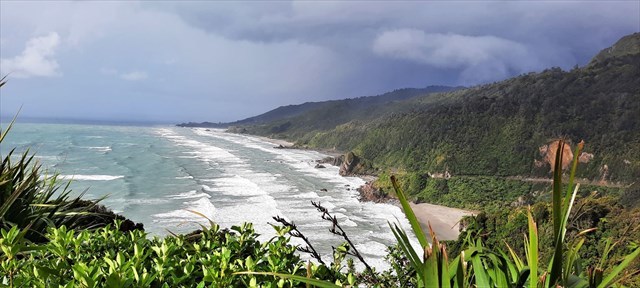
The Tuia Mātauranga Pōkai Whenua GeoTour follows the footsteps of early explorers of Aotearoa New Zealand taking you to places where leaders of the past searched for food, resources and ways to adapt and survive in this new land.
Use the Pōkai Whenua GeoTour as your classroom to explore the stories of the past, in the present, to preserve what is unique in Aotearoa New Zealand for the future.
Collect the codewords to get the Geocoin puzzle pieces
To be able to complete this GeoTour and receive your special Geocoin collectable, remember to take a note of the codeword placed in the cache. This will need to be recorded in your passport which can be downloaded here.
63 of the 150 Pōkai Whenua GeoTour caches will contain a randomly placed special FTF token (a replica of the Tuia Mātauranga GeoTour commemorative coin). This is yours to keep! If you find more than one, you might consider leaving it for the next person who finds the cache.
Welcome to the place of “hanging red hair”. Well known to generations of Māori travellers, the name came from the crimson rata flowers that festoon the coastal bluffs at the height of summer.
Flax Ladders
To the south of Irimahuwhero Lookout stands Te Miko cliff. Māori travellers on land, used the beaches and scaled the rock faces on flax and vine. They used these routes for trading and seasonal migrations following the life cycles of animal and plants for food. During their 1846 journey down the West Coast from Golden Bay to the Taramakau River, Charles Heaphy, Thomas Brunner, their Māori guide Kehu and their dog Rover were unable to get past the steep 32 metre Te Miko cliffs, north of Punakaiki. They had to climb an old Māori ladder, made of pieces of rātā wood lashed together with flax.
The difficult coast was later avoided via an inland pack rack and then by a coastal track that was developed into a highway for vehicles – the road you use today, opened in 1929.

Explorer Thomas Brunner scaling the cliffs on a makeshift ladder while Rover the dog has the rare luxury of a lift
The Wild Side
Wild scenery and wildlife thrive along this section of the West Coast. The sea and air is warmer here than in the south. Ponga (tree ferns) stand out against the forest trees of rimu, rātā and beech species. On exposed headlands, harakeke (flax) is a tough survivor.
Kororā, (Little Blue Penguin) nest along the coastal edge under tangled vegetation. The food-rich ocean also attracts kekeno, (New Zealand fur seal) and Hector’s dolphin while further out to sea migrating whales occasionally pass by.

Paparoa National Park
The region is known for its karst landscape where limestone has been dissolved by water to form drainage networks including caves, vertical shafts and resurfacing stream. Water has sculpted limestone into strange and delicate forms.
Parekaka (spotted shag) nest on high ledges of Te Miko cliff, protected from storms and predators. A few kilometres south is a colony of the world’s largest burrowing seabird, the Westland petrel, known to Māori as taiko. Within the park, roa (Great Spotted kiwi) find a home. Listen for their whistling call at night.
From here at Irimahuwhero there is a dash of southern scenery on fine days when the great mountain Mt Cook/Aoraki and his brothers can be seen above the horizon.